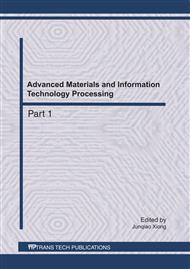p.1156
p.1160
p.1164
p.1168
p.1177
p.1185
p.1189
p.1193
p.1198
Analysis of Group Learning Environment on the Collaborative Knowledge Building Perspective--Case of the U.S. VMT Project
Abstract:
Computer Supported Collaborative Learning (CSCL) is the highlight in the computer and education area. U.S. Virtual math teams (Virtual Math Teams, Referred to as VMT) project’s main studying purpose is the computer supported group cognition, its collaborative learning environment is a typical environment. By the analysis of this online collaborative learning environment of this project, the paper proposes five aspects of the structure and function which mainly embodied in the group discussions and negotiation, knowledge representation, knowledge reasoning, knowledge co-construction and sharing, external support, and pointed its lack of supporting in the non-mission communication and ubiquitous learning, and the paper proposed the idea of adding micro-blogging function in VMT environment.
Info:
Periodical:
Pages:
1177-1184
Citation:
Online since:
July 2011
Authors:
Price:
Сopyright:
© 2011 Trans Tech Publications Ltd. All Rights Reserved
Share:
Citation:


